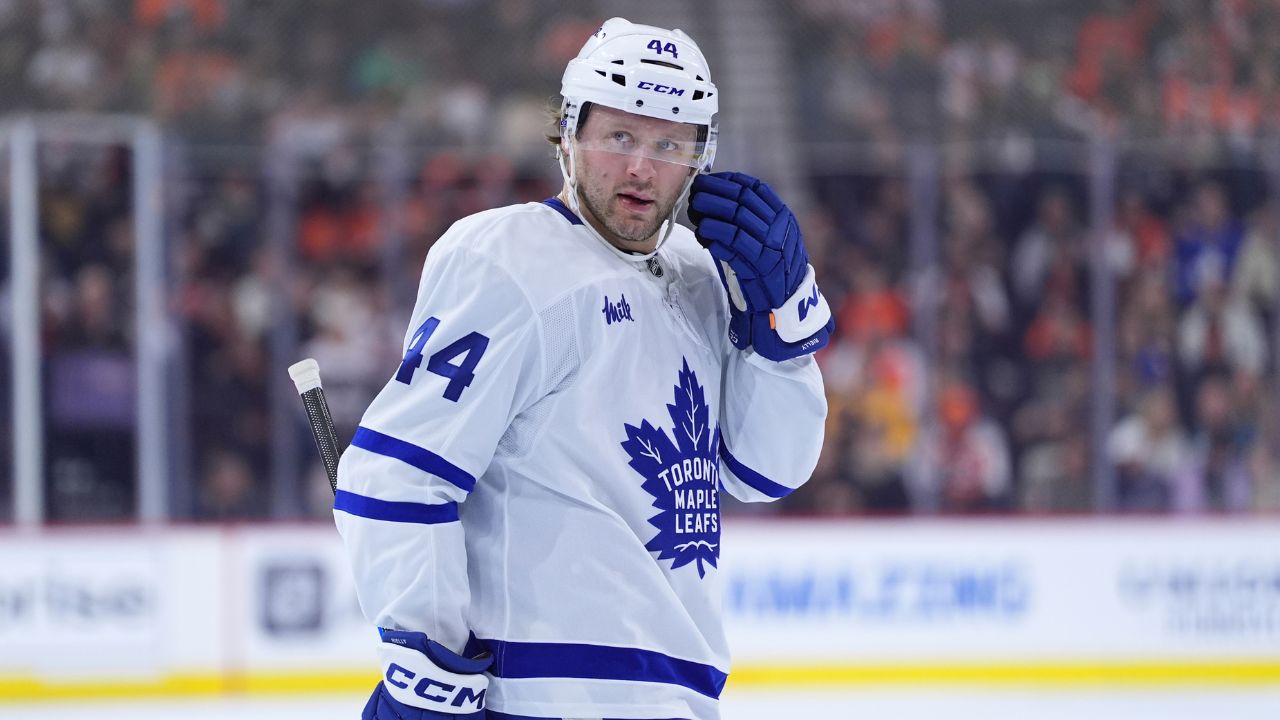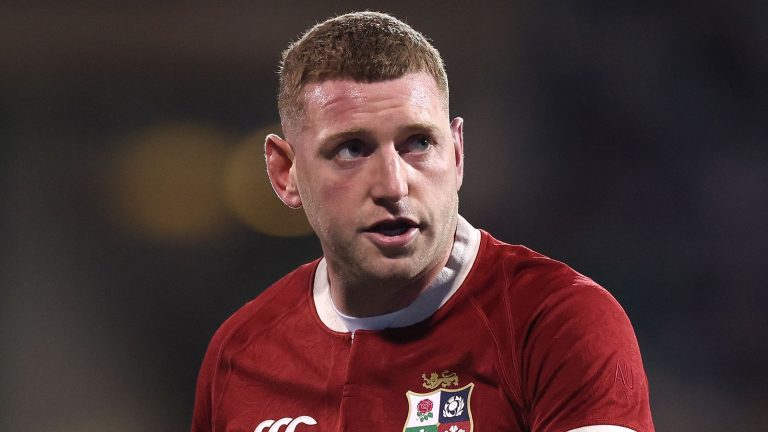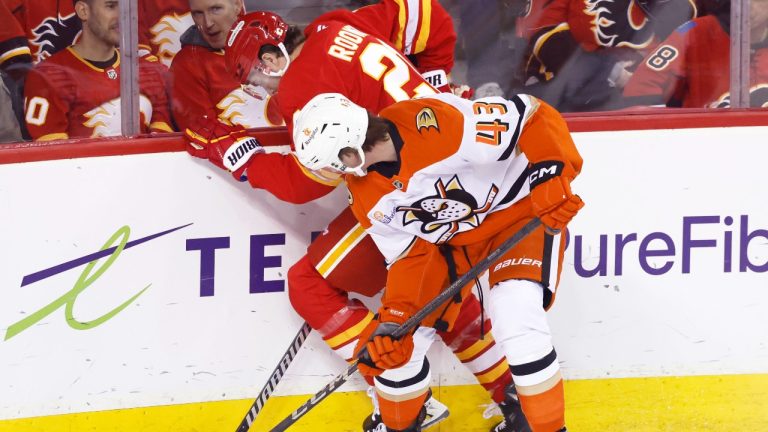The loss of Mitch Marner is going to impact the Toronto Maple Leafs in many ways. Offensively, they are going to take a hit, as it’s nearly impossible to replace a 100-point player and someone who can play in all situations. One of those situations is the power play, where Marner took over the quarterbacking responsibilities last season.
Toronto’s power play clicked at nearly 25 per cent in 2024-25, placing the Leafs in the top 10 in the NHL on the man advantage. They’ve finished higher in the rankings in recent years without Marner at the top and even with a better percentage, but the Leafs’ power play was very efficient with five forwards and remained effective for the most part in the post-season, something that had been lacking in the past. The five-forward look is likely going to be a thing of the past minus Marner, though Toronto can’t revert to something that is ineffective in the playoffs.
There are a few internal candidates who could obviously take over Marner’s role, with pros and cons. Plus, there’s still plenty of time between now and puck drop on opening night for the Leafs to shake up their roster with a trade that includes a candidate. Here are four options who could quarterback Toronto’s power play next season:
The most obvious choice is Rielly by default because he’s done it before with great results, at least in the regular season. With Rielly at the helm, the Leafs’ power play ranked first in 2021-22 (27.3 per cent), second in 2022-23 (26 per cent) and seventh in 2023-24 (24 per cent). It was among the best in the league over that stretch, but Rielly would now be returning to a unit with a different look. Matthew Knies was inserted into the picture when Rielly was removed to create a five-forward man advantage.
Knies has been a huge boost to the group with his net-front presence, and there’s reason to believe they could have continued success with Rielly at the point as well. Like Marner, Rielly doesn’t have a booming shot, but he has a good ability to sift pucks through to the net. The Leafs now have the ability to employ a layered screen approach in front with Knies and John Tavares, so Rielly’s ability the get the puck on goal through traffic could pay big dividends.
Here’s a good example from Game 6 against the Ottawa Senators, where Tavares was in the slot and Knies was directly in front of Linus Ullmark, both obstructing his view. Auston Matthews had the puck up top and a weak shot found its way through because Ullmark couldn’t see anything.
Rielly should be able to capitalize on these double screens, as it doesn’t matter how hard you shoot it if the goalie can’t see it. With that said, there are some reasons for concern with bringing him back on the top power play. The man advantage has fallen off drastically at times in the playoffs with Rielly on it. In 2023-24, Toronto’s power play dropped to a dreadful 4.8 per cent against the Boston Bruins and in 2021-22, when it ranked first during the regular season, it fell to 11th out of 16 teams in the playoffs.
That’s likely in part due to there being less time and space in the post-season and the fact that Rielly can be a little hesitant with his decision-making. Marner, on the other hand, is very decisive, and even though he doesn’t have a booming shot, his ability to get the puck to the net quickly and with urgency helps create offence around the crease. This power play in particular from Game 3 against the Florida Panthers is a good example, when Marner immediately fires a perfect shot pass to Tavares for a tip-in goal. Had he waited even an extra half-second, a Florida penalty killer could have taken away the shooting lane or tied up Tavares’ stick.
Rielly not being as decisive with the puck is what makes the group a little more potent with Marner on it, especially when the Leafs are stacking the front of the net with Knies and Tavares. That said, Toronto could easily use Rielly as the power play quarterback to start the season and it should still see decent results, but the challenge will be making sure it continues into the playoffs.
We haven’t seen much of Nylander up top on the power play, though he does have the skillset for the job. He’s a dual-threat that has scored at least 40 goals in each of the past three seasons and possesses the vision to be a great facilitator for his teammates. Where Nylander could provide the most value as a power-play quarterback is with his shot, something the Leafs haven’t really had as a threat from that spot in the past.
Nylander has averaged 280 shots on goal over the past four campaigns and he would force opposing defences to at least respect his shot. Marner excelled at getting his shot to a teammate’s stick in front of the net but didn’t often shoot to score, where Nylander would give the Leafs an added dynamic in that regard.
The challenge becomes finding a suitable formation with Nylander in that slot. If they still want to work Rielly in, he probably doesn’t make sense anywhere else but at the quarterback spot. And if the Leafs plan to stick with five forwards, who do they replace Marner with? Maybe there’s an argument for Max Domi, Nick Robertson or someone like the newly acquired Matias Maccelli, but none of those options are ideal.
There are also defensive responsibilities that would fall on Nylander’s shoulders, which, to put it nicely, isn’t his strong suit. No matter how efficient the power play is, Nylander would inevitably find himself defending odd-man rushes here and there and even with someone as good defensively as Marner is, the Leafs still gave up seven shorthanded goals last year and two more in the playoffs. Including this one, where Nylander perhaps isn’t as defensively desperate as he should be.
It’s a legitimate concern, and something tells me Craig Berube wouldn’t feel comfortable with Nylander back there, even if his offensive talents are a great fit. It would be high-risk, high-reward with Nylander in that position on every man advantage.
Ekman-Larsson would be a convenient solution for a few reasons. For one, he’s already on the roster and wouldn’t cost the Leafs any assets or additional cap space. It’s always best to try and solve a problem internally, and Ekman-Larsson is a decent puck mover who has two 20-goal seasons to his credit, plus another four campaigns where he scored double-digit goals as a defenceman. He’s also familiar with the system as he played on the second unit in 2024-25, averaging nearly a minute and a half of power-play time per game.
Those impressive offensive seasons were several years ago, though. Expecting him to recapture that magic, even with all the talent on a Leafs power play, would be a big ask since Ekman-Larsson hasn’t scored more than 32 points since the 2018-19 season. He also just turned 34, and Toronto is probably already leaning on him too much as it is. Ekman-Larsson played more than 21 minutes a night last season and if they put him on the top power play, at least another minute per game will be added to his workload.
That could be a recipe for disaster, and come late in the season and into the playoffs, the Leafs would run the risk of Ekman-Larsson running out of gas. He’s probably best suited for second-unit duties at this point and could be used on the top group only for a short-term stretch as an injury replacement.
There is nothing left of real significance in free agency that could help the Leafs’ power play, so any upgrade would have to come via trade. There have been rumblings that Toronto would have interest in the likes of Dougie Hamilton or Erik Karlsson if they are available, though how serious those inquiries are remains to be seen. Brad Treliving has never met a tire he didn’t enjoy kicking.
However, both players would be a good fit, and the Leafs have never really had a true power-play quarterback defenceman who could fire it from the point. Adding a right-shot would also balance out their pairs, and either Karlsson or Hamilton would give Toronto more offence from their blue line, something that was lacking last season. And it’s worth noting that despite the Pittsburgh Penguins struggling mightily as a team last year and Karlsson’s best days behind him, they still did have the league’s sixth-best power play in 2024-25 with him running it.
The problem with going this route is that there would be a heavy acquisition cost to bring one in. The Penguins sound like they are eager to move Karlsson, but they aren’t going to give him away for free. Especially when Kyle Dubas is negotiating with his former team. The Pens would also have to retain a decent chunk of the cap hit to make it doable for the Leafs, which will also drive up the price. Not to mention that to entertain one of these moves, Treliving would likely have to get Rielly to waive his no-move clause to try and get his contract off the books in potentially a separate deal, which seems unlikely to happen.
Let’s also keep in mind that while an upgrade on the blue line would be nice to have for the Leafs, it isn’t their biggest need. A top-six forward and preferably a centre is likely what they’re looking for, and they don’t have enough assets to trade for both. Using their biggest and only few trade chips on a 35-year-old defenceman like Karlsson, who still carries a big cap hit, is a risky play. Perhaps if the Leafs swing a larger deal for a forward, they could aim to have a lesser defenceman thrown in that maybe has power-play potential, but they won’t be at the calibre of Hamilton or Karlsson.
The most likely path here is that the Leafs stick with the status quo to start the year and fall back to Rielly to run the power play. It’s a safe play that would allow them to save their remaining cap space and trade assets to possibly make a move in-season to help upgrade their roster. There will likely be a few players who come available once some teams become sellers, and perhaps that’s when Toronto looks to make a splash.






